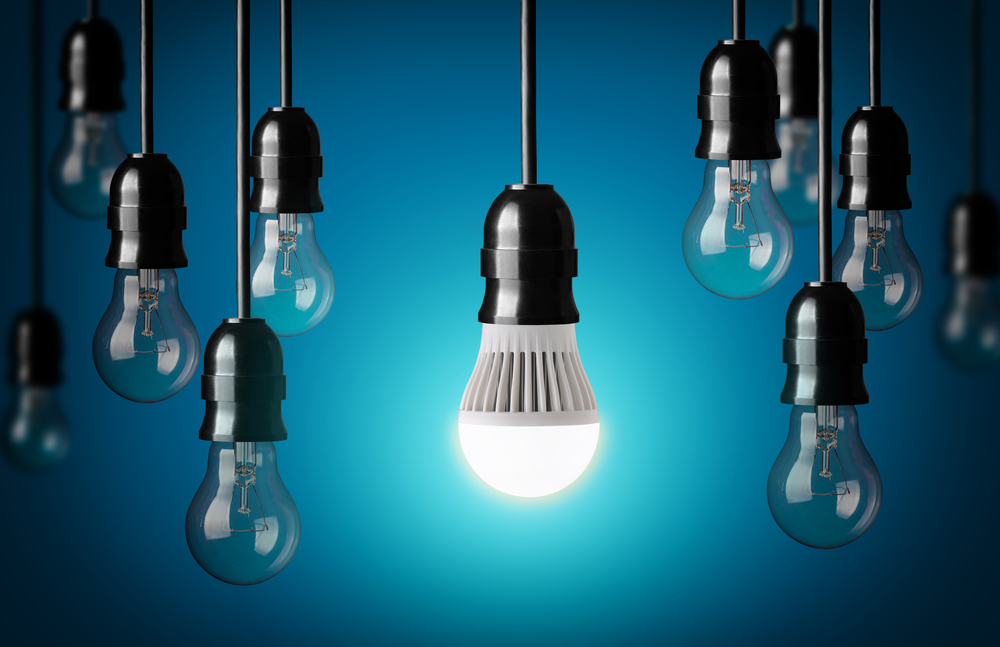Enforcement of Lighting Efficiency Standards

Enforcement of Lighting Efficiency Standards
Background
In 2007, the U.S. Congress adopted minimum energy efficiency standards for everyday light bulbs to be gradually phased in between 2012 and 2014. These new standards are not a ban, but an upgrade on decades-old technology.
The standards require that light bulbs must use at least 27% less energy. Over the course of a three year period certain light bulbs were phased out due to the new standards. On January 1, 2012 the traditional 100W light bulb was phased out, followed by the 75W bulb on January 1, 2013 and 60W and 40W bulbs on January 1, 2014.
These energy-saving standards have now been successfully implemented: New and improved halogen incandescent and LED (light-emitting diode) light bulbs have entered the market and are widely available along with compact fluorescents lamps (CFLs).
- The new standards save consumers energy and money, encourage innovation, and reduce pollution that harms our public health.
- Light Bulb Efficiency Standards have the potential to save 143 million metric tons of CO2 emissions – 25% of the President’s Climate Goals.
- The new light bulb standards reduce energy demand, avoiding the need for 30 large power plants.
- The new light bulb standards are saving consumers about $100 per household per year, or more than $10 billion nationally.
- Nationally, approximately 12,500 workers are employed in the energy efficient lighting sector.
Burgess Amendment
An amendment, first introduced by Representative Michael Burgess (R-TX) blocks the use of any appropriated funds for the implementation or enforcement of them. As such, DOE has interpreted the amendment to mean that it cannot enforce, implement, or provide guidance on light bulb standards.
This amendment was included in the Consolidated Appropriations Act of 2012 and has been included in each subsequent spending bill.
Harmful Effects of the Burgess Amendment
Issue #1: Lack of Clarity in the Statute
EISA is unclear as to the exact parameters of the efficiency standards. Due to a drafting error, the statute refers to the standards in two ways: “Maximum Watts” and “Maximum Rated Watts.” In the first instance, the standard is an absolute number. In the second, it allows for traditionally accepted manufacturing tolerances. The expense of manufacturing to an exact, absolute number is substantially greater than manufacturing to tolerances that would, for instance, allow for the occasional batch of bulbs to slightly exceed an absolute maximum. Without clarity, companies may interpret the law differently, and potentially incorrectly, placing some in the circumstances of incurring uncompetitive costs of manufacturing.
Issue #2: Regulatory Uncertainty for Tier Two Rulemaking
EISA required the DOE to commence a rulemaking no later than January 1, 2014, to determine the next tier of lighting efficiency standards for general service lamps (Tier 2). Additionally, EISA mandates a “fallback” standard that will require the specified light bulbs be no less than 45 lumens per watt (LPW) effective on January 1, 2020 should DOE not move forward on the rule.
DOE has interpreted the Burgess Amendment as prohibiting progress on that rulemaking. The DOE’s uncertainty creates significant uncertainties for lamp manufacturers because without a rulemaking, the backstop becomes effective.
If the 45 LPW minimum light bulb standard becomes rule by default, U.S. manufacturers would likely lack the flexibility needed to include existing technology, like energy efficient incandescent bulbs utilizing halogen gases, in any future standards. This forces manufacturers to make a production line choice: to discontinue making halogen incandescent bulbs or to continue making them in violation of the rule.
Issue #3: Foreign Imports and Risk to U.S. jobs.
United States lighting manufacturers invested right here in America to make better bulbs in accordance with the new standards. Improved incandescent light bulbs that replace the traditional 100, 75, and 60-watt bulbs are already on store shelves.
Foreign manufacturers have not pledged to follow EISA standards and the lack of enforcement authority by the Department of Energy opens the door to illegal, less efficient imports. Without DOE guidance, U.S. Customs and Border Protection has no enforcement criteria for light bulbs and cannot prevent illegal imports - placing U.S. manufacturing, and ergo American jobs, at risk.
The Alliance to Save Energy urges the full enforcement of the light bulbs standards and the initiation of the Tier Two rulemaking. For more information, please contact Liz Tate (etate@ase.org).
STAY EMPOWERED
Help the Alliance advocate for policies to use energy more efficiently – supporting job creation, reduced emissions, and lower costs. Contact your member of Congress.
Energy efficiency is smart, nonpartisan, and practical. So are we. Our strength comes from an unparalleled group of Alliance Associates working collaboratively under the Alliance umbrella to pave the way for energy efficiency gains.
The power of efficiency is in your hands. Supporting the Alliance means supporting a vision for using energy more productively to achieve economic growth, a cleaner environment, and greater energy security, affordability, and reliability.



